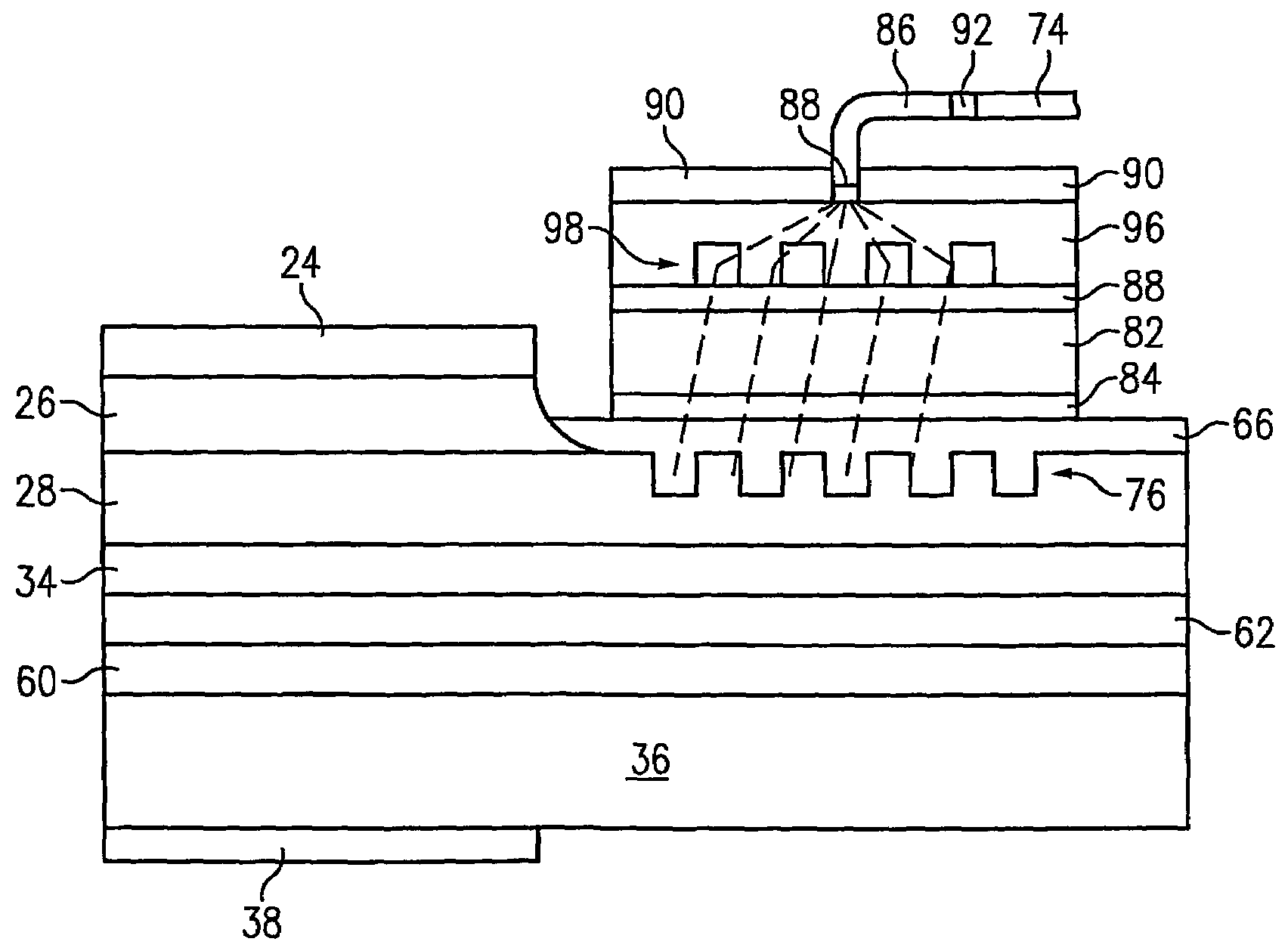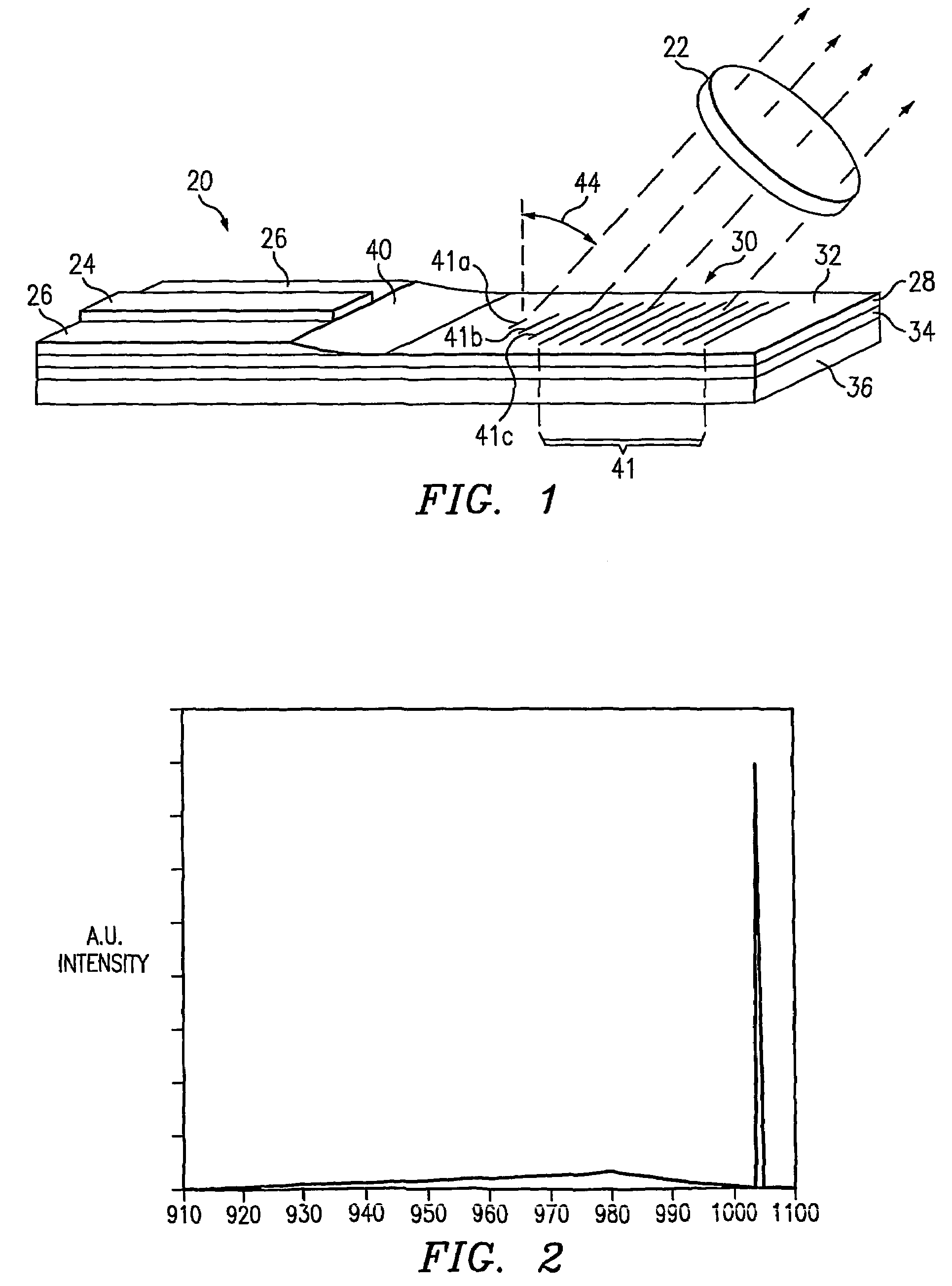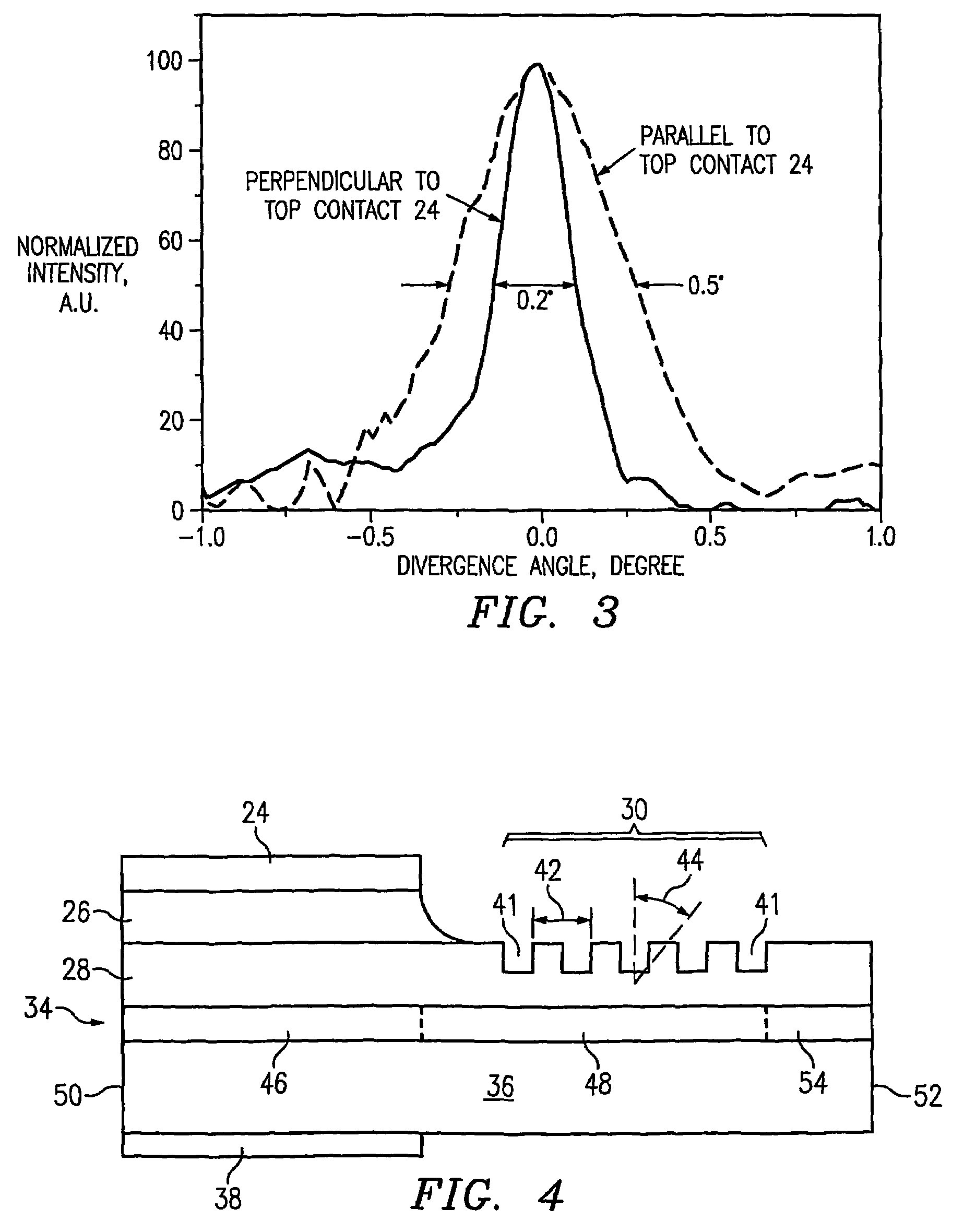Laser-to-fiber coupling
a fiber coupling and fiber technology, applied in the field of devices and/or methods of making electrically pumped chiplaserdiodes, can solve the problems of low output power, low volume of vcsel, and reduced performance of vcsel, so as to reduce or even eliminate the need for expensive discrete optical elements, reduce alignment problems, and avoid noise reflections carefully controlled
- Summary
- Abstract
- Description
- Claims
- Application Information
AI Technical Summary
Benefits of technology
Problems solved by technology
Method used
Image
Examples
Embodiment Construction
[0037]The making and using of the presently preferred embodiments are discussed in detail below. It should be appreciated, however, that the present invention provides many applicable inventive concepts that can be embodied in a wide variety of specific contexts. The specific embodiments discussed are merely illustrative of specific ways to make and use the invention, and do not limit the scope of the invention.
[0038]This diode-chip-laser can provide narrow-band coherent light, (light that is virtually all in-phase and at, or essentially at, the same wavelength). These grating-coupled diode improvement enable, for the first time, combining of all the functional advantages of non-semiconductor-chip (e.g., fluid) lasers with the efficiency, economy, convenience, and the efficiencies of semiconductor-chip-manufacturing (wafer processing). These chips generate light parallel to the top surface and utilize gratings that diffract light out top and / or bottom surfaces. Thus they have both a...
PUM
 Login to View More
Login to View More Abstract
Description
Claims
Application Information
 Login to View More
Login to View More - R&D
- Intellectual Property
- Life Sciences
- Materials
- Tech Scout
- Unparalleled Data Quality
- Higher Quality Content
- 60% Fewer Hallucinations
Browse by: Latest US Patents, China's latest patents, Technical Efficacy Thesaurus, Application Domain, Technology Topic, Popular Technical Reports.
© 2025 PatSnap. All rights reserved.Legal|Privacy policy|Modern Slavery Act Transparency Statement|Sitemap|About US| Contact US: help@patsnap.com



